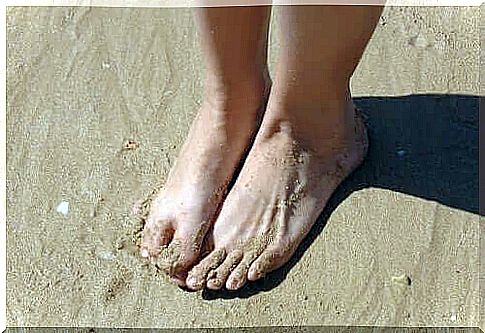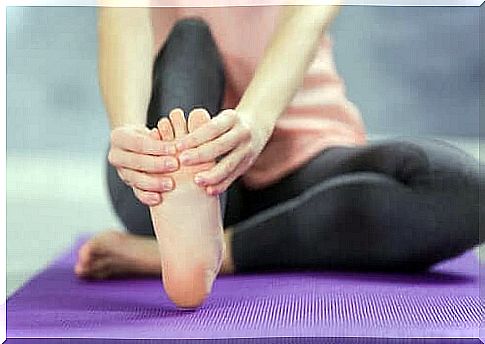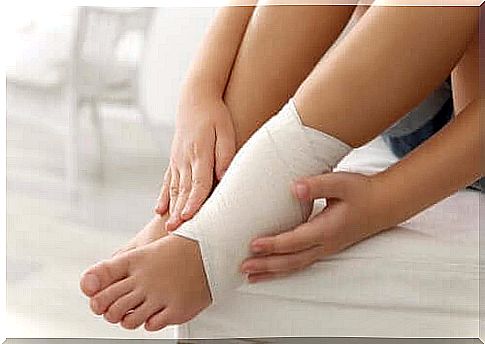Five Treatments For Swollen Ankles And Feet

Before choosing any of the treatments for your swollen ankles and feet, it’s important to determine the cause. Does it have to do with the ligaments? Can’t move well? If this is the case, you should consult your doctor. However, if it’s just a minor injury or due to fluid retention, try one of the remedies in this article.
Swollen ankles and feet are common in the elderly and pregnant women. However, they are also common among athletes and people who do physical exertion.
While it can result from poor circulation, trauma, and infections, swelling is almost always mild and can improve if you take some basic measures. Are you ready to take notes?
Treatments for Swollen Ankles and Feet
You need to determine how severe your symptoms are before trying any of these tips to relieve your swollen ankles and feet. If it’s a specific type of swelling, the kind that occurs after sitting in the same position for a while, some simple exercises and basic care will suffice.
However, if your symptoms persist or if you have pain, bruising, and walking difficulties among other things, you should see a doctor so they can prescribe the appropriate treatment. They should be able to determine the type of injury you have with a physical exam and X-rays.
That said, here are some home remedies and treatments to take care of poor circulation and swollen ankles and feet at home.
1. Raise your legs

If your work usually keeps you going, just lift your legs when you get home. This reduces swelling and discomfort. The best way to relieve swollen ankles and feet is to bring your legs above your heart.
This simple move improves blood flow from the lower extremities to the heart and in turn reduces swelling. It’s a great way to get quick relief if you’re experiencing numbness or pain.
What should you do?
- Lie on a comfortable surface, such as a bed or yoga mat, and lift your legs toward the ceiling.
- Keep them high for 10 to 15 minutes and then bring them down.
2. Get moderate exercise
Moderate exercise has therapeutic effects on lesions leading to ankle swelling. In fact, it is one of the best habits you can have because it will reactivate your blood circulation. It also prevents moisture retention. The World Health Organization (WHO) recommends that you do at least a few hours of moderate activity per week.
What should you do?
- Consult a doctor or physical therapist for the exercises that can best help you if you have an ankle injury.
- Avoid high-intensity routines until your injury has healed.
- Opt for an activity such as walking and swimming. You can also stretch with an elastic band.
3. Resting Helps Relieve Swollen Ankles

If the swelling is from high-impact physical activity, all you need to do is rest. While moderate exercise helps to relieve swollen ankles, it is healthy to rest for a few days after strenuous exercise.
Rest reduces the pressure your body puts on your ankles. It also contributes to muscle relaxation and promotes the repair of damaged tissues.
What should you do?
- If you have recently had an injury or sprained ankle, rest for 2 or 3 days.
- If you feel pain when you rest on your foot, use crutches and see a doctor if necessary.
4. Apply Ice
The application of ice or a cold pack can be very helpful in treating swollen ankles. The cold temperature has a therapeutic effect, as it reduces the levels of inflammation. Its application accelerates pain relief and also reduces bruising and muscle spasms.
What should you do?
- Take a cold pack or put several ice cubes in a bag or wrap them in a clean cloth.
- Gently rub this over your ankles and feet.
- Continue until your foot feels numb. Then rest for two to four hours and then repeat the treatment.
- Continue this treatment for three or four days until your swelling is under control.
5. Use a bandage for an injured ankle

A doctor may recommend applying a bandage to reduce swelling and limit joint movement for a while. Bandaging the affected ankle is a good complement to other treatments to reduce swelling and bruising.
Before doing this, you can massage the affected area with anti-inflammatory ointments or oils. Keep the bandage around the ankle for two or more days, depending on the severity of the swelling.
What should you do?
- To start, cut a horseshoe-shaped pillow from a piece of felt. You can also buy a preformed wrap in many stores and pharmacies.
- Then place it around the outside of the swollen ankle.
- Then wrap an elastic bandage to make sure it’s not too tight. Make sure the bandage doesn’t reduce your blood flow, as this will make the swelling worse.
Finally, try to improve your diet and avoid excessive salt intake. Eating a lot of salt will delay any treatment as it can worsen fluid retention. Drink plenty of water and avoid alcohol and tobacco as much as you can.









